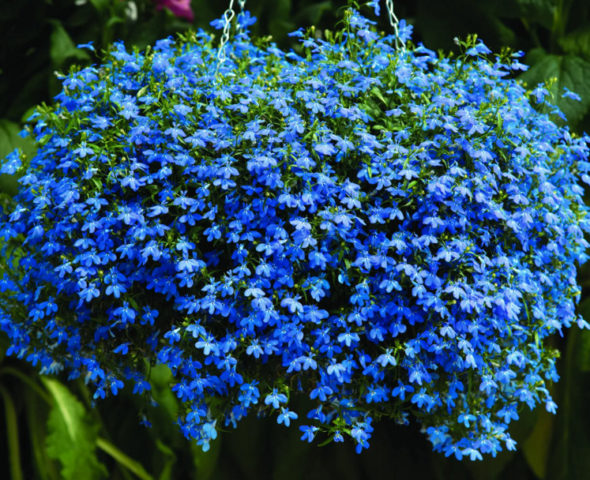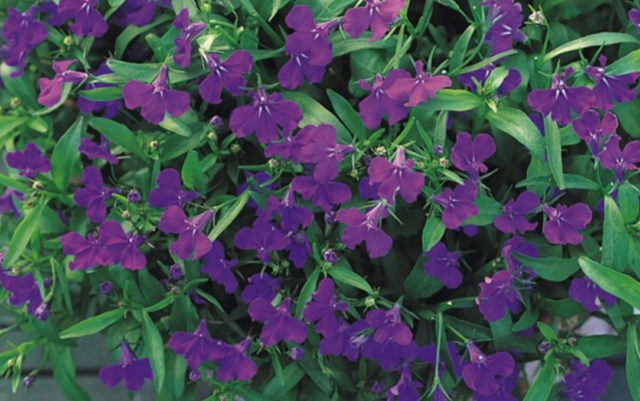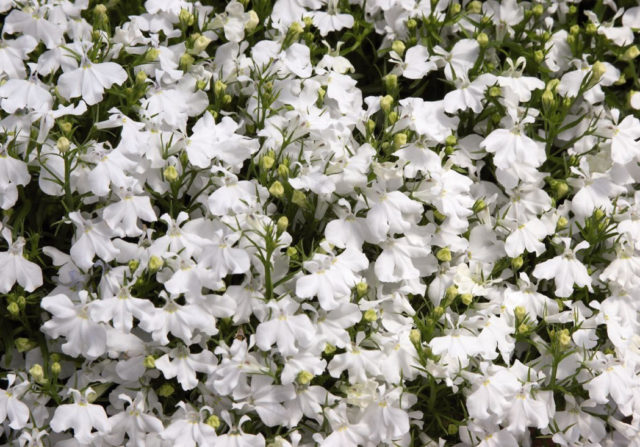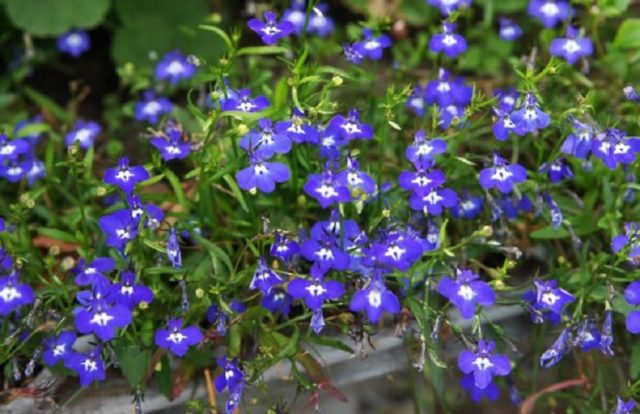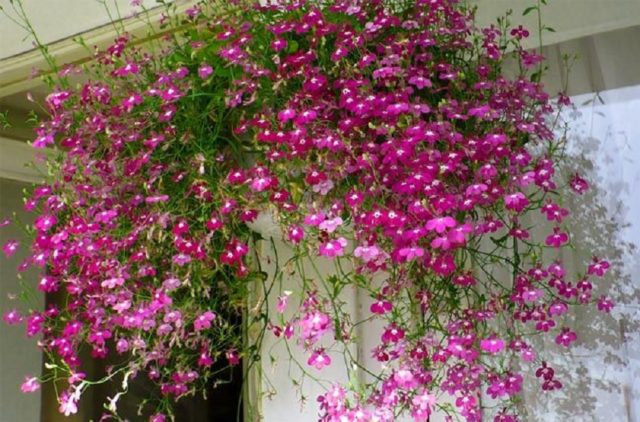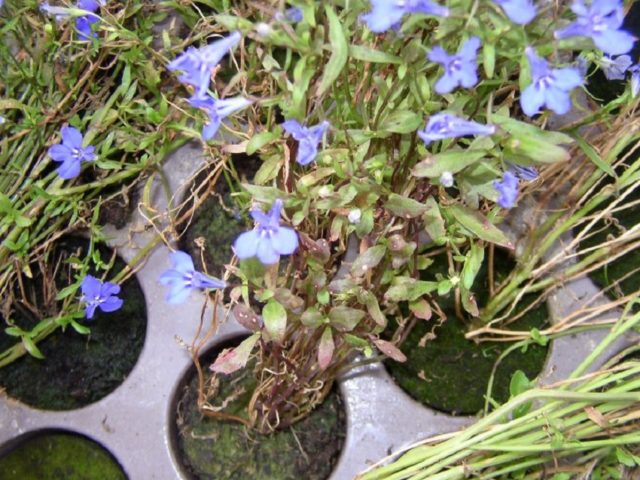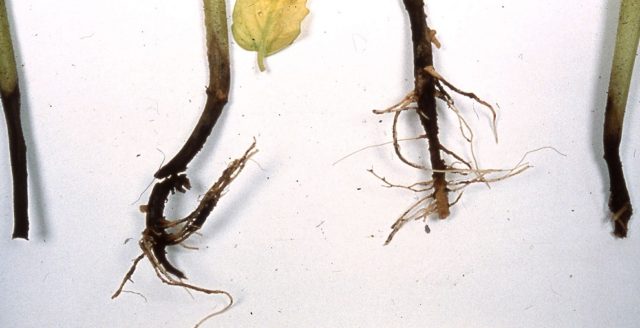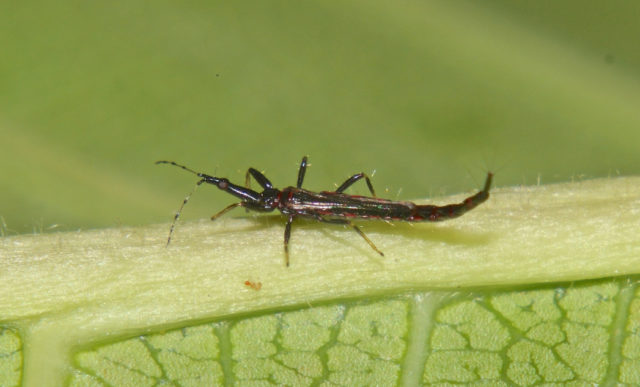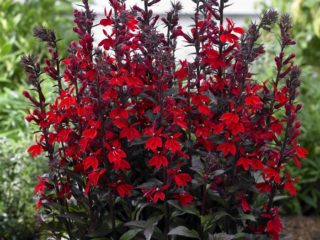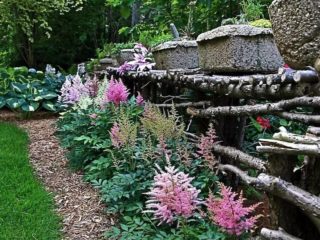Content
Lobelia Riviera is deservedly recognized as a worthy decoration of the garden. The plant belongs to the perennials of the Lobelia genus of the Kolokolchikovye family. The Riviera series first appeared in South Africa and North America. However, on the territory of the Russian Federation, they are grown as annuals, since they do not tolerate the low temperatures of the winter period.
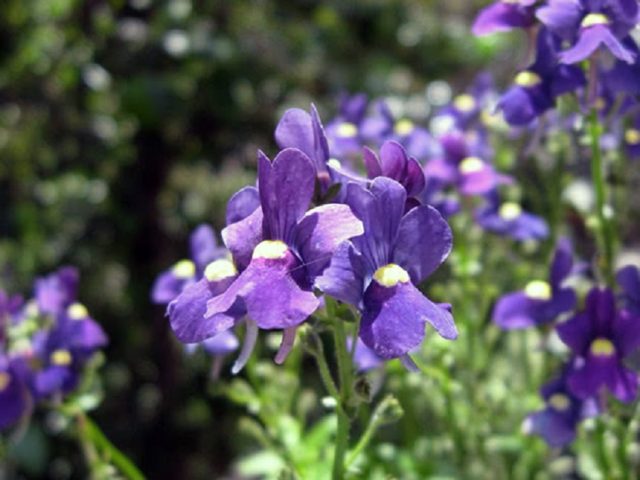
Lobelia does not tolerate direct sunlight
General description of Lobelia Riviera
The culture is named after the scientist De Lobel. Lobelia "Riviera" is also called blue, border, blackberry (blackberry). The riviera is an early flowering species. Variety characteristic:
- Strongly branching and densely leafy plant. The bush is spherical, very compact, from 10 to 40 cm high.There are creeping varieties in which the length of the hanging shoots reaches 30-40 cm.
- Blooming shoots, internodes are very close.
- The leaves are arranged alternately and spirally. The shape is oval-spatulate, pointed. The edges are slightly scalloped and scalloped. The leaf blades are small, the average length is no more than 3-6 cm, and the width is about 1-1.5 cm. The color is light or dark green, some specimens are lilac.
- The flowers are small, each not more than 1.2-2 cm in diameter. Bisexual, zygomorphic, two-lipped. The pedicel is short, each with one flower. The color of the main species is blue. Lobelia "Riviera" is found with purple or white flowers.
- The flowering period lasts from early June to mid-autumn (October). Very small seeds ripen by the end of summer.
When decorating a site, lobelia is used as a curb plant along paths, around flower beds, reservoirs or a rock garden. The lush bush of "Riviera" looks luxurious in a flowerpot or hanging pots. It is often used as a ground cover flowering carpet. Combines with verbena, pelargonium, petunia and rudbeckia. According to reviews, a very beautiful background is created by Lobelia Riviera pink.
Lobelia Riviera subspecies
The "Riviera" variety has several subspecies. Gardeners know 5 varieties:
- Sprawling. Plants are up to 15 cm high and the stems are twice as long - from 15 to 30 cm.
- Compact or bushy. This species is distinguished by its spherical shape and good density. Height 15-20 cm.
- Erect. It grows up to 25-30 cm in height. Column-like bush, beautiful regular shape.
- Dwarf. The bush is compact with a small height, only 8-12 cm.
- Hanging, better known as ampelous. The shoots hang down in a beautiful cascade, the length of each varies from 30 to 50 cm.
Most often, you can find 3 forms belonging to the culture - ampelous, upright and compact.
The best varieties of Lobelia Riviera
There are more than 300 types of culture, but not all can grow in middle latitudes. Gardeners have to choose the varieties that are most attractive and capable of surviving in an unusual climate for them.
Riviera Rose
Compact bush no more than 15 cm high, ball diameter up to 20 cm. This is a variety of pink Lobelia Riviera. Her flowering is long and abundant. The number of flowers on the plant is so great that the leaves are almost invisible. Lobelia Riviera Rose looks like a lush sphere of small bells.
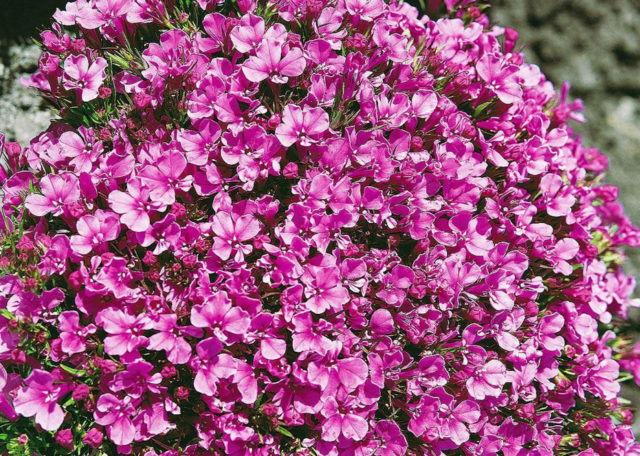
With the help of "Riviera Rose" you can decorate a rabat or a border
Riviera Blue
A beautiful flower with a deep blue tint. The color is a little cold, but in combination with plants of a different tone, it gives an unsurpassed contrast effect. Bush height up to 25 cm, lush flowering. Lobelia erect "Riviera Blue" perfectly combines with other species and enriches any composition.
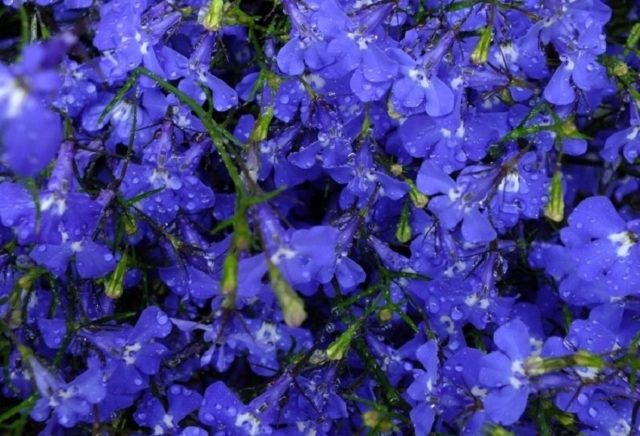
The flowering period of the "Riviera Blue" lasts until September
Midnight Blue
Lobelia erect "Riviera Midnight Blue" originally from North America, the shape of the crown is spherical, the height of the plant is no more than 20 cm. Leaf blades with a bronze tint. It blooms in the open field for a short time, within 2 months (May-June). However, with proper pruning, Riviera Midnight Blue lobelia can bloom again and delight with flowering before the cold weather.
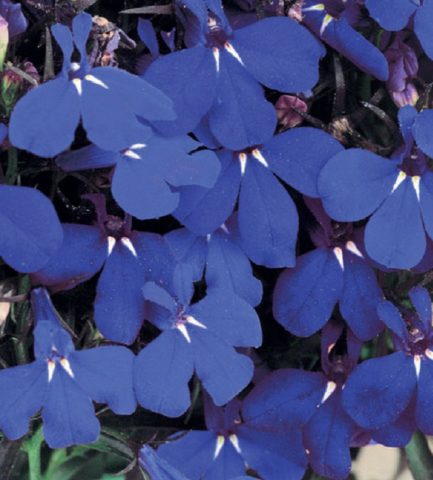
Midnight Blue prefers partial shade, may die in the open sun
Sky Blue
A feature of the species is an earlier onset of flowering than other varieties. Riviera Sky Blue lobelia blooms 2 weeks earlier. The shape of the bush is spherical and compact, its height is about 15 cm, a shade of pale blue with a purple tint. Long bloom, until September.
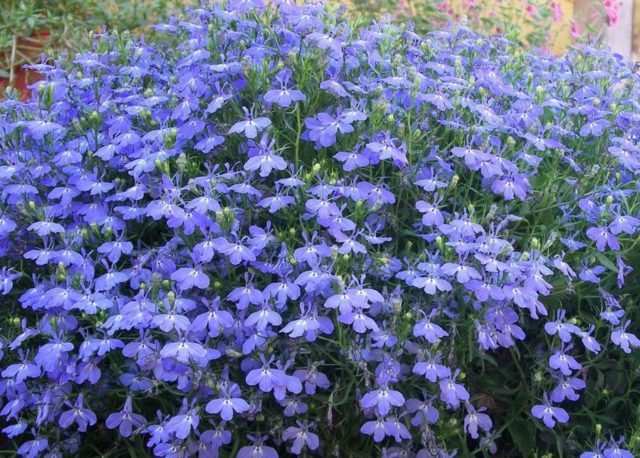
"Sky Blue" reproduces well by cuttings and sexually (by seeds)
Riviera Lilac
Owner of pink and blue flowers. Blooms in 3.5 months after germination. The first wave ends in early September. After cutting the shoots to a height of 5-7 cm from the ground and subsequent feeding, the second wave sets in. In this case, the Riviera Lilac variety of bush lobelia blooms until frost.
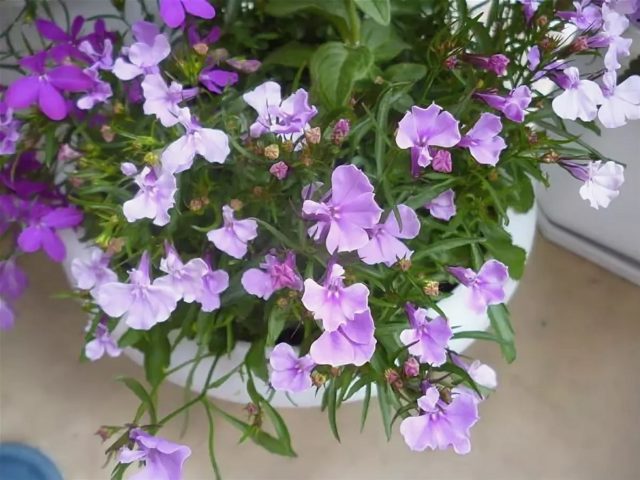
Riviera Lilac is widely used for curb or carpet planting
Marine Blue
Lobelia type "Riviera" early flowering with a rich blue tint of inflorescences. The bush is compact, has the shape of a hemisphere, up to 20 cm in diameter, erect stems. Rivera Marine Blue lobelia blooms 2 weeks earlier than the bulk of the varieties. A very ornamental plant that looks great in any composition. A huge number of small flowers perfectly decorate flower beds, borders, balconies, combined with any options.
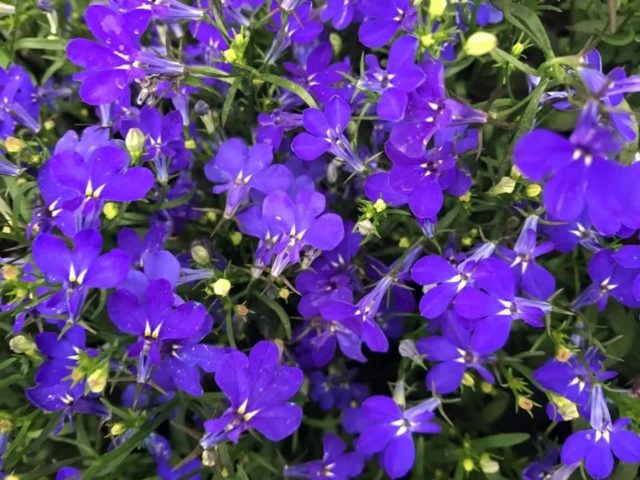
Marine Blue grows well in a flowerpot, hanging planter or pot
Blue Splash
Early series with 2 weeks earlier flowering period. The bush is compact, small in height, only 13 cm. Very beautiful flowers - white with blue spurs. The leaves are dense, alternate, small. Rivera Blue Splash is intended for open field and container growing. Loves sunny places and warmth, blooms in the year of sowing.
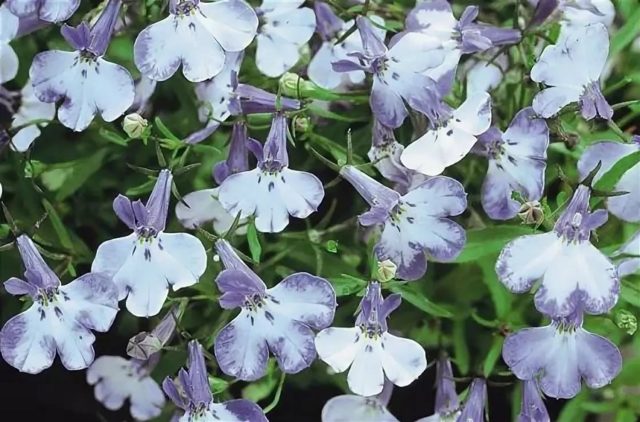
The Blue Splash variety is suitable for growing on an industrial scale
Breeding features
The perennial plant is grown in temperate climates as an annual. To breed your favorite variety, use:
- dividing the bush;
- cuttings;
- seed method.
The division of the bush is rarely used. As soon as the first shoots appear on it, it must be dug up and divided into parts. Then land in pre-prepared holes.
Lobelia "Riviera" is cut when it is necessary to fully preserve the parental characteristics. Plants that have wintered in pots are used. Cut the cuttings in the spring, each about 8-10 cm long. Place them in a solution of a root-forming preparation and plant them in separate containers.
Sexual reproduction (by seeds) is the most common and simplest technique for annual lobelia. The seedling method is recommended so that the plant has time to bloom in the same year.
Landing rules
Sowing should be done as early as possible. The optimal time is March.
Lobelia seedlings stretch strongly when there is a lack of sunlight. Therefore, if it is not possible to additionally illuminate the seedlings, then it is not worth sowing too early. It is better to wait until the end of March and plant strong, healthy seedlings when the weather is warm outside.
Soil for sowing lobelia must be prepared from equal parts of sand, peat and turf. It is not recommended to add humus to prevent blackfoot damage to the seedlings.
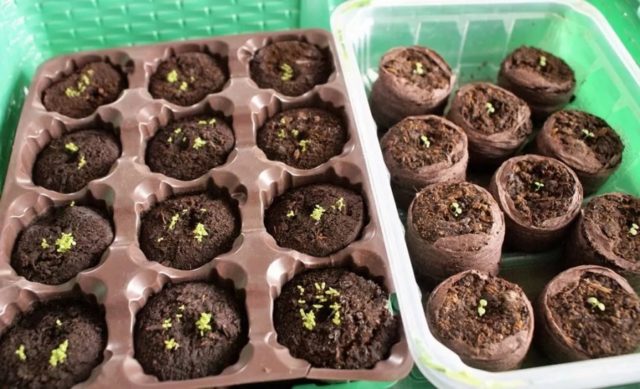
It is better to grow seedlings in peat tablets
Fill containers with soil mixture, level the soil surface, compact a little. The flower seeds are so small that they must be mixed with sand before sowing or using the "wet match" technique. Dip the end, on which there is no sulfur, in water, then attach to the seeds of the "Riviera". If they stick, transfer to a glass with a minimum depth. Leave the seeds on the surface. Do not water, it is better to put the container in a pan and add water little by little. Cover the container with foil or glass, periodically opening the mini-plate for airing. As soon as the Riviera seedlings hatch (7-10 days), the shelter can be removed. After germination, the seedlings must be dived in a bunch. Pick up 5-7 pieces with a toothpick, put them in the grooves and sprinkle with soil. Water, put in partial shade for 2-3 days.
Growing lobelia Riviera from seeds
Seedling care consists of standard activities. It is necessary to carefully monitor soil moisture and the quality of lighting. Lobelia seedlings can rot when waterlogged, and a lack of light will lead to their stretching.
It is better to water the “Riviera” seedlings from a spray bottle, trying to carry it away from the seedlings. So they will be saved from lodging.
The timing of the pick is not regulated. The challenge is to prevent the lobelia seedlings from overgrowing. You need to dive several pieces into one cup, filling it halfway with soil, then add earth as needed.
Every 14 days, feed the lobelia with a solution of a mineral complex fertilizer.
An unusual item for seedlings is pruning. Elongated sprouts just need to be trimmed with scissors. Gardeners recommend simultaneously giving the bush a neat shape.
7-10 days before planting, it is necessary to start hardening of the “Riviera” saplings, exposing the container to the street.
When the soil warms up well and a stable heat is established, the lobelia should be planted in open ground. This period usually occurs at the end of May.
It is recommended to choose a partial shade with fertile loose soil. The distance between the holes is 20 cm. Plant several shoots in one hole.
Visually about growing lobelia seedlings:
How to care for Lobelia Riviera
If the gardener managed to grow healthy seedlings of the "Riviera", then further care for it will not require much effort.
The plant must provide:
- Dosed watering. The soil should not dry out, but stagnant water is also not allowed. During the hot period, lobelia will have to be watered twice a day. Especially those varieties that are planted in pots or containers.
- Top dressing. For the first time, food must be added a month after transplanting into the ground. Nitrogen components can cause increased growth, so you will have to combine top dressing with pruning. If the soil is nutritious, then any substances are recommended to be applied in minimal doses. Lobelia responds best to mineral formulations for petunias.
- Pruning. It is enough to make minimal shortening in order to stimulate the formation of buds and preserve decorativeness. After the end of the first wave of flowering, you can cut the lobelia more radically, leaving 5 cm from the soil surface. Then the culture will bloom again.

The root system of a flower in a pot should be moistened frequently.
How Lobelia Riviera winters
To preserve an adult plant until next spring, you need to carefully transplant the bush with an earthen ball into a flower pot. Then cut the shoots to the lower leaves and put them indoors. A windowsill, a greenhouse, or a cool, bright room will do. During wintering, it is necessary to periodically moisten the substrate so that it does not dry out. Only lobelia planted in the ground in spring can winter.In the south, wintering is practiced in the garden: the shoots must be cut off, the plant must be covered with dry foliage, covering material, and soil.
Pests and diseases
Lobelia can be susceptible to bacterial and viral infections and pest attacks.
The most common problems:
- Fusarium wilting, in which the plant dies. Pruning or grafting should only be done with a sterile instrument.
- Stem rot - mold appears, then the shoot fades. The death of the bush occurs when the entire plant is infected. Gardeners should avoid foliar watering.
- Thrips are the main pests of lobelia. Their presence can be detected with small white specks on the foliage. For destruction, insecticide treatment is required.
Conclusion
Lobelia Riviera looks great in hanging pots, in a rock garden or near a pond. The variety of varieties makes it possible to include it in any composition. Compliance with the basic rules of agricultural technology will allow gardeners to grow and breed lobelia at home.
